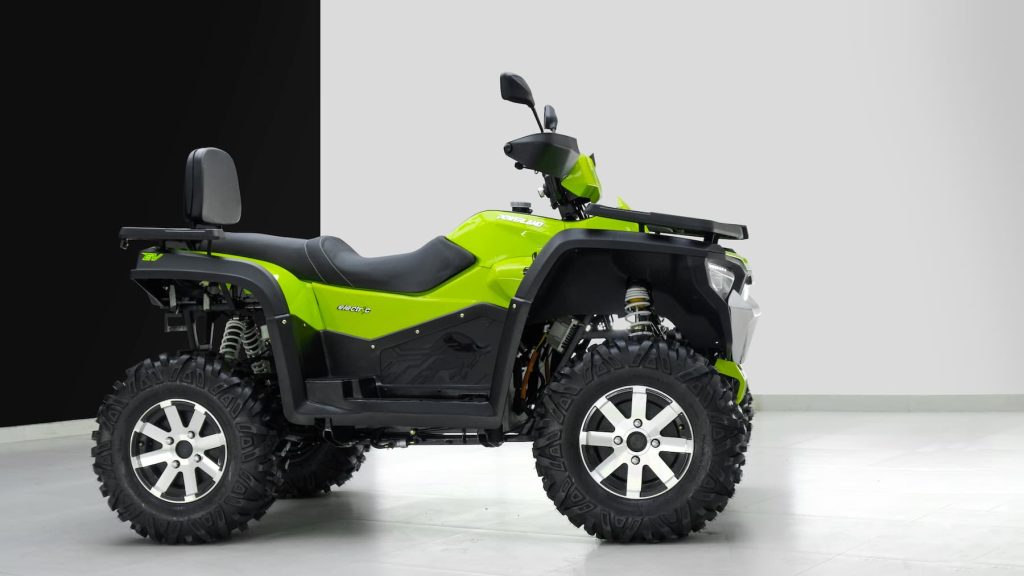
The nascent electric ATV market doesn’t offer that many options just yet, so it isn’t exactly difficult to become one of the self-described “fastest and most powerful electric ATVs.” But even if the pickings are still slim, the Indian company Powerland ATV thinks that its upcoming Tachyon electric ATV has what it takes to scratch that silent, powerful all-wheel-drive itch.
The Powerland Tachyon was developed in India and is expected to begin exports to the US and EU markets this summer.
The Tachyon has already achieved EU certification as a Tractor (T3b) and Quadricycle (L7e-B1) class vehicle.
Instead of a heavy and clunky transmission, the Tachyon employs all-wheel-drive with the use of four in-wheel motors. Combined, they offer 50 hp (37 kW) of peak power. The torque output is a whopping 210 Nm (155 lb-ft) per wheel.
The use of in-wheel motors means there’s no differential, no transmission, no gearbox, and no CV joints. The tradeoff is additional unsprung mass in the wheels that puts extra load on the independent suspension, but the designers are banking on the power delivery and maintenance advantages making up for it.

Powering those four motors is an 11 kWh battery that the company says can last for up to 110 km (68 miles) of range. A higher capacity 15.5 kWh battery is also in the works to allow for an increased range.
Between the four motors and high-power battery, the Tachyon electric ATV is said to offer a 0-60 km/h (36 mph) acceleration time of four seconds.
The top speed varies depending on the country of export and vehicle classification. For example, countries with tractor classifications will see the Tachyon’s speed reduced to between 40-60 km/h (25-36 mph). Countries with L7e B1 will have the electronic speed limiter increased to 90 km/h (56 km/h), maxing out the category’s allowable top speed.
Pricing in Europe is expected to be set at €14,500 before taxes, and the Tachyon will first launch in Germany. The US price is estimated at US $15,000 before taxes.
ATVs are apparently just a start, as the company is also already working on UTVs with 2-seater and 4-seater variants. Progress is continuing on the lower end as well with the development of a smaller electric 4×4 ATV.
The company is currently in talks to raise its second round of funding and is setting up a new manufacturing facility in India with an estimated production capacity of 10,000 units per year.

While still few in numbers, electric ATVs offer several key advantages over their gas-powered counterparts, making them an increasingly popular choice for off-road enthusiasts and eco-conscious consumers alike.
One of the most significant benefits is that electric ATVs require less maintenance due to their simplified mechanical components, resulting in lower long-term ownership costs. They also boast instant torque delivery, which enhances overall performance, providing a smoother and more responsive ride.
For hunters, outdoorsmen, and others who enjoy nature, the minimal environmental impact of electric ATVs are another important benefit. These off-road EVs produce zero emissions and contribute to a reduction in air and noise pollution that is even more noticeable in the serene outdoor environments in which ATVs typically operate.
While electric ATVs haven’t seen as much development work yet, larger UTVs are currently rolling out from several manufacturers. Polaris is one of the biggest names in the game, though smaller companies like Volcon and Tracker are also aiming for their own slice of the off-road electric pie.
Author: Micah Toll
Source: Electrek



